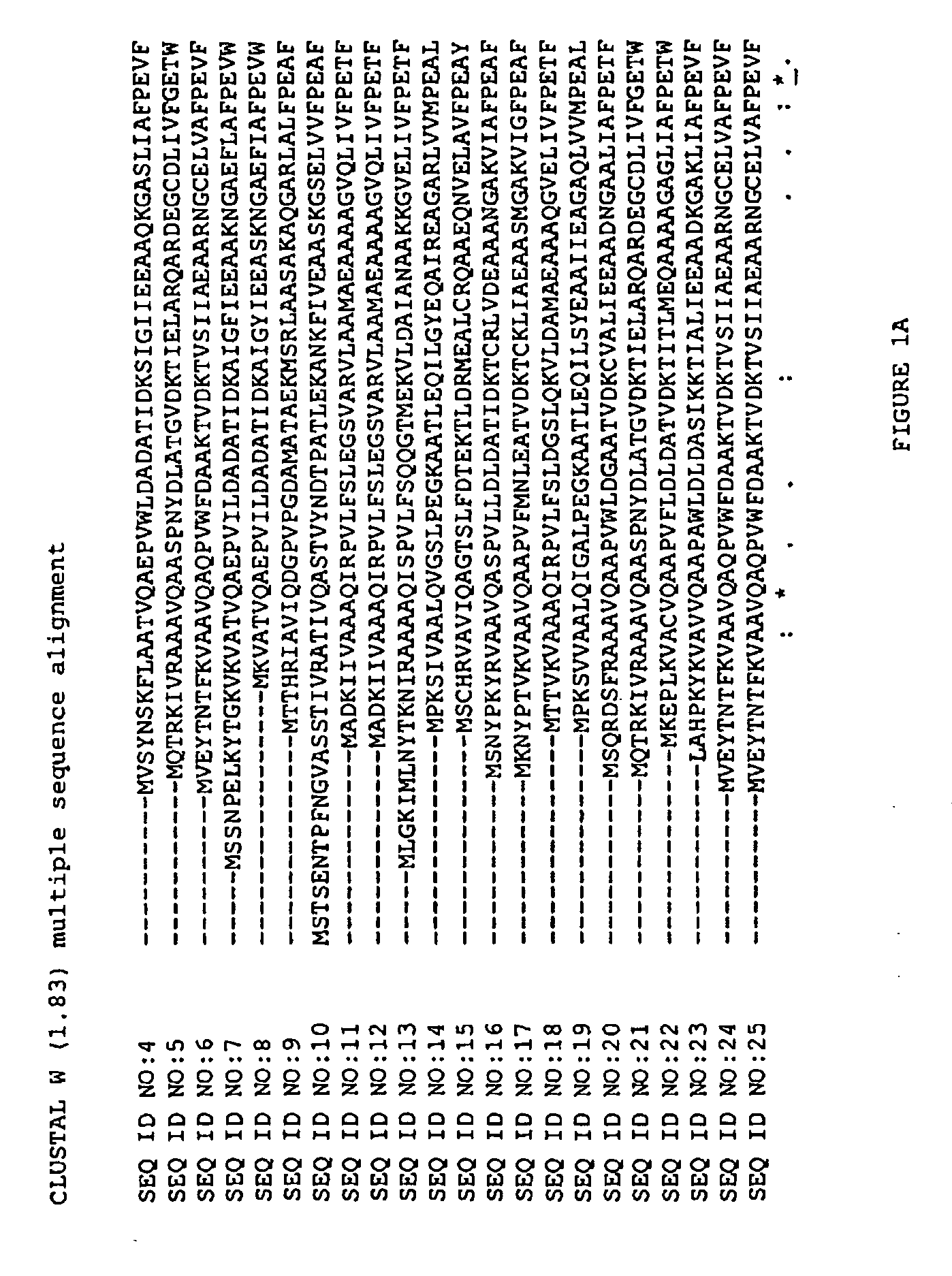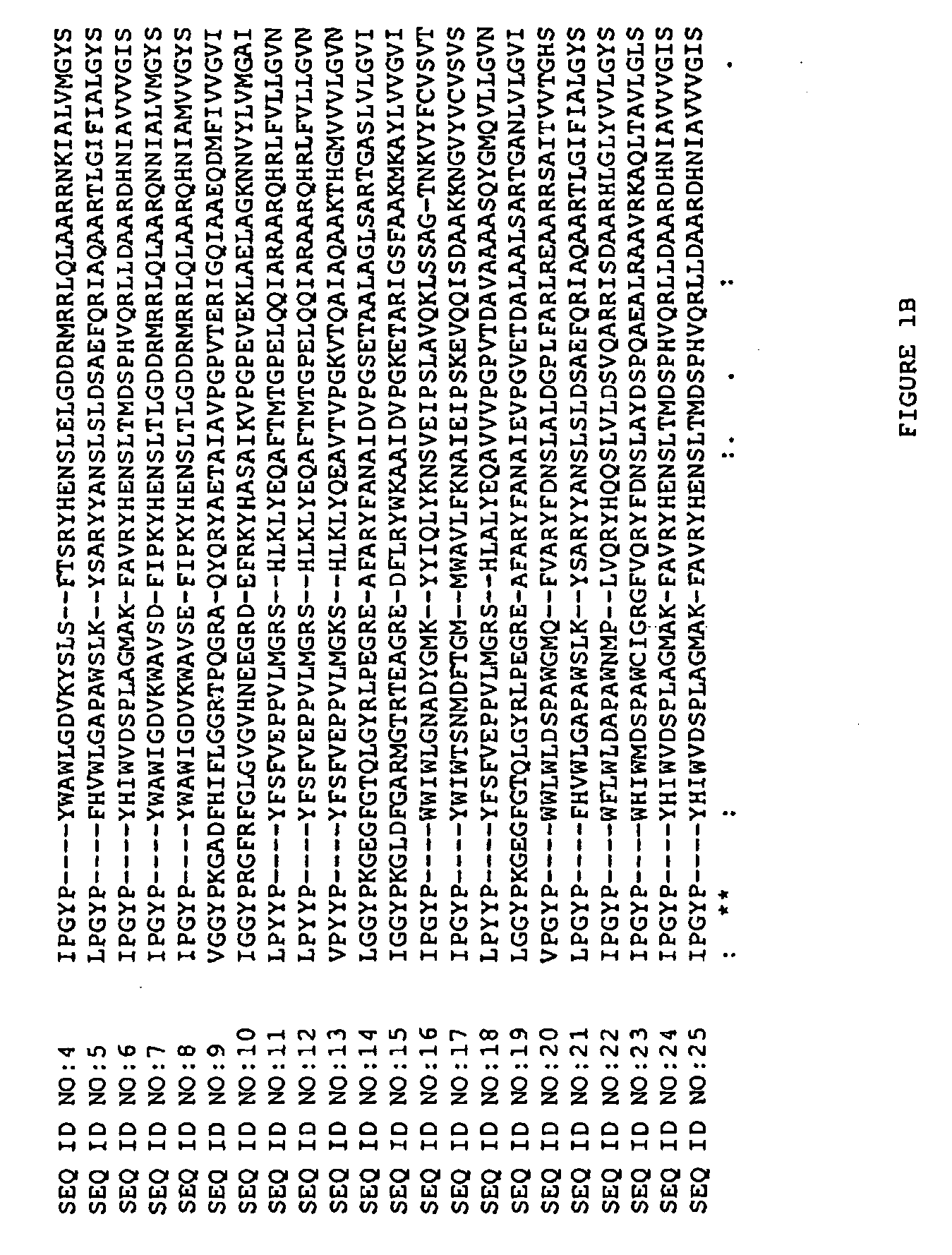Sequestration of formaldehyde to stabilize nitrilase specific activity when converting glycolonitrile to glycolic acid
a technology of nitrilase and formaldehyde, which is applied in the field of formaldehyde to stabilize can solve the problems of suppressing catalyst activity, affecting the specific activity of nitrilase catalyst, and affecting the synthesis of organic acids.
- Summary
- Abstract
- Description
- Claims
- Application Information
AI Technical Summary
Benefits of technology
Problems solved by technology
Method used
Image
Examples
example 1
Dependence of Nitrilase Specific Activity of Unimmobilized E. coli MG1655 / pSW138-168V on Added Polyethylenimine
[0201]To a 20-mL glass vial with magnetic stir bar was added 1.0 mL of a 25.0 mg (dry cell wt.) / mL suspension of E. coli MG1655 / pSW138-168V (SEQ ID NO: 51) in 0.1 M KH2PO4 buffer (pH 7.5), and either 1.0 ml of 0.3 M KH2PO4 buffer (pH 7.5) or 1.0 mL of a 10.2 mg / mL solution of polyethylenimine (BASF LUPASOL® PS, 750,000 mw; BASF Aktiengesellschaft, Ludwigshafen, Germany) in 0.3 M KH2PO4 buffer (pH 7.5) at 25° C. With stirring, 2.0 mL of an aqueous solution containing glycolonitrile (1.0 M) and formaldehyde (8 mM, 1 mM, or 0.04 mM) in distilled, deionized water at 25° C. was added, and the reaction mixture maintained at 25° C. with a temperature bath. At 5, 10, 15, and 30 minutes, a 100 μl aliquot of the reaction mixture was removed and mixed with 100 μl of water, 10 μl of 6.0 N HCl and 200 μl of 0.25 M n-propanol in water (HPLC external standard), the mixture centrifuged, an...
example 2
Preparation of Copoly(Vinylalcohol / Vinylamine)
[0202]A solution of 0.2 g sodium dodecylbenzenesulfonate (Sigma-Aldrich Catalog #289957) and 0.2 g sodium dihydrogen phosphate in 80 mL deionized water was placed in a 250-mL, 4-neck RB flask with condenser and nitrogen inlet, thermometer, dropping funnel and magnetic stirrer. The flask was swept with nitrogen and was stirred in a 72° C. water bath until the solution temperature was 65° C.; then 0.1 g VAZO®-64 (2,2′-azobisisobutyronitrile; mw: 164.2; Sigma-Aldrich catalog #441090) initiator was added.
[0203]A solution of 40 g vinyl acetate (Sigma-Aldrich catalog #V1503, filtered through basic alumina to remove inhibitor), 4 g N-vinylformamide (Sigman-Aldrich catalog #447331, used without further purification) and 0.3 g VAZO® 64 was placed in the dropping funnel and 5 mL of this monomer solution was added to the flask. The mixture was stirred 20 min and another 5 mL of monomer was added. Five-mL aliquots of monomer were added every 20 min ...
example 3
Dependence of Nitrilase Specific Activity of Unimmobilized E. coli MG1655 / pSW138-168V on Added Amine Protectants
[0205]To a 20-mL glass vial with magnetic stir bar was added 20 mg to 400 mg of amine protectant (see Table 2), followed by 1.825 mL of deionized water and 1.0 mL of 0.3 M KH2PO4 buffer (pH 7.5). The pH of the resulting mixture was checked and re-adjusted to pH 7.5 with 6 N HCl. When the pH of the resulting mixture was stable at pH 7.5, 10 mL of a ca. 25.0 mg (dry cell wt.) / mL suspension of E. coli MG 1655 / pSW138-168V (SEQ ID NO: 51) in 0.1 M KH2PO4 buffer (pH 7.5) was added, then the reaction was initiated by the addition of 0.175 mL (0.187 g) of aqueous glycolonitrile (61 wt % GLN in water, 2.00 mmol of glycolonitrile in solution also containing either 0.80 mol % or 0.10 mol % formaldehyde relative to glycolonitrile), and the reaction mixture maintained at 25° C. with a temperature bath. At 5, 10, 15, and 30 minutes, a 100 Ml aliquot of the reaction mixture was removed a...
PUM
| Property | Measurement | Unit |
|---|---|---|
| average molecule weight | aaaaa | aaaaa |
| insoluble | aaaaa | aaaaa |
| purity | aaaaa | aaaaa |
Abstract
Description
Claims
Application Information
 Login to View More
Login to View More - R&D
- Intellectual Property
- Life Sciences
- Materials
- Tech Scout
- Unparalleled Data Quality
- Higher Quality Content
- 60% Fewer Hallucinations
Browse by: Latest US Patents, China's latest patents, Technical Efficacy Thesaurus, Application Domain, Technology Topic, Popular Technical Reports.
© 2025 PatSnap. All rights reserved.Legal|Privacy policy|Modern Slavery Act Transparency Statement|Sitemap|About US| Contact US: help@patsnap.com



